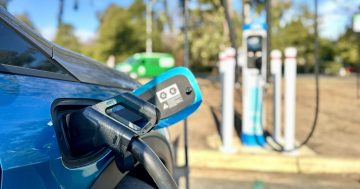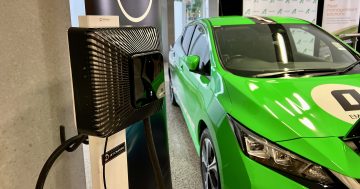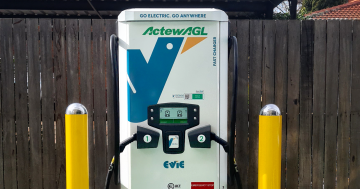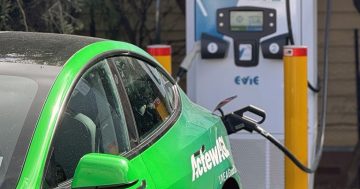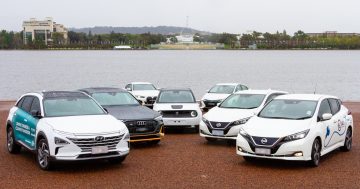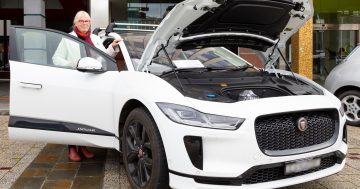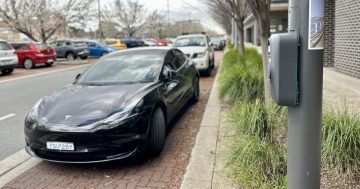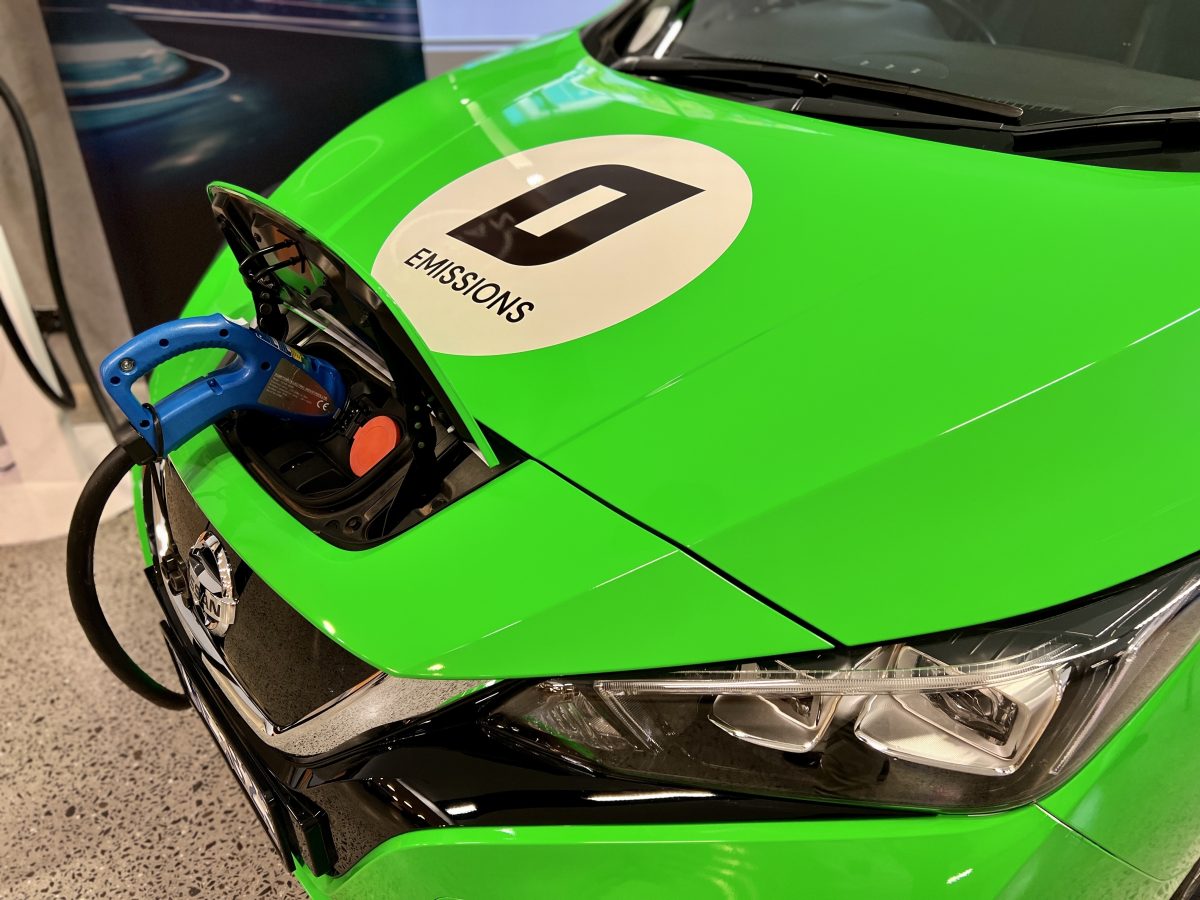
The Vehicle-to-Grid (V2G) bi-directional charger plugged into a Nissan Leaf. Photo: James Coleman.
On 13 February this year, Victoria was lashed by a catastrophic thunderstorm that took out 12,000 km of powerlines and poles across the state’s electricity network, plunging more than 500,000 homes and businesses into darkness.
Around 600 km away in the ACT, however, 16 electric vehicles were doing their bit to help.
The ACT Government has previously experimented with what’s called ‘Vehicle 2 Grid’ (V2G) technology, facilitated by a special type of charger that allows for power to go into and out of an EV’s battery.
“V2G technology works using a bi-directional charger, meaning the energy from an EV battery can be quickly enabled to start sending electricity back into the grid, just like rooftop solar,” Minister for Water, Energy and Emissions Reduction Shane Rattenbury explained.
A 2020-2023 research study, co-funded by the Australian Renewable Energy Agency (ARENA) and led by ActewAGL, involved a fleet of 51 Nissan Leaf vehicles and a number of ‘Wallbox Quasar 1’ V2G charging boxes from Australian distributor Jetcharge.
At the conclusion of the trial in March 2023, the ACT Government said it had been “vital in uncovering the barriers and potential solutions for the use of this technology within Australia”.
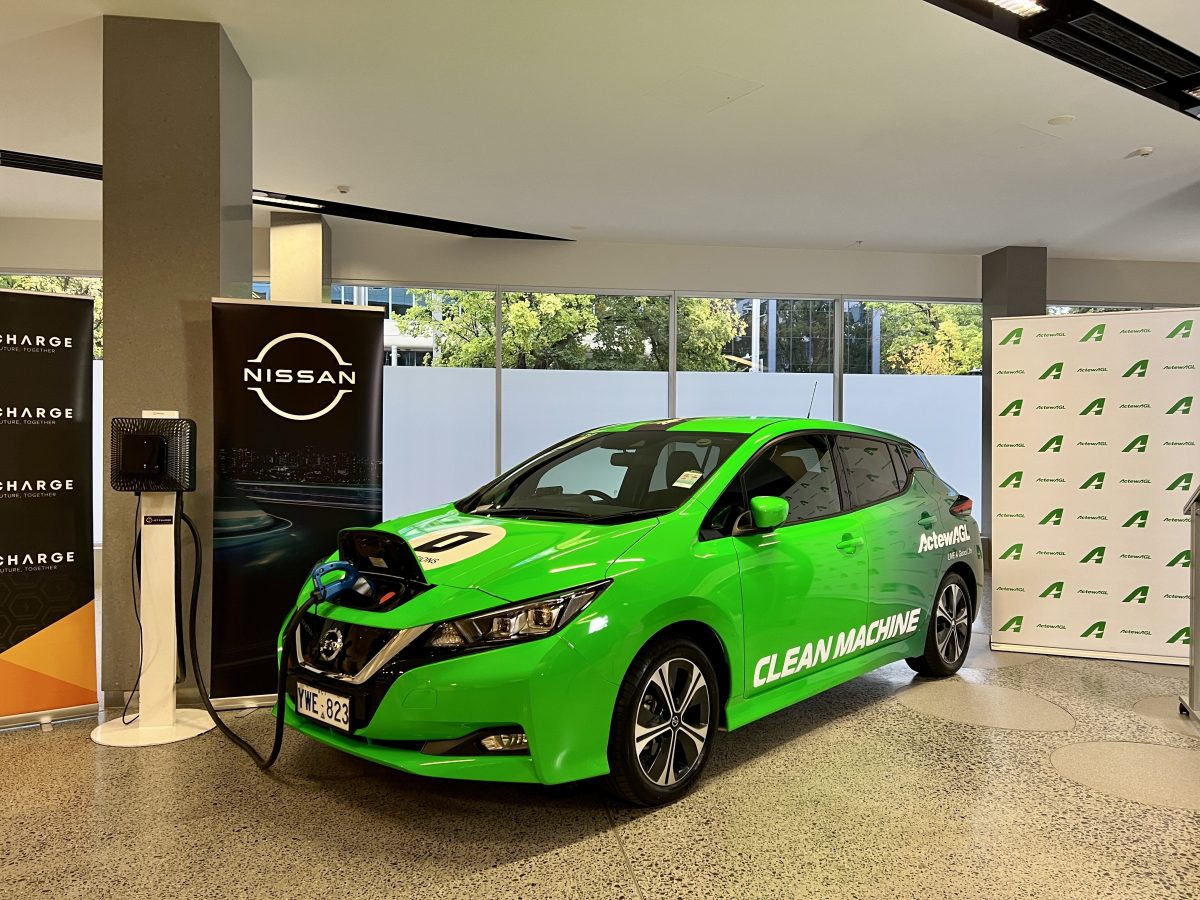
The 2020 Vehicle-to-Grid (V2G) trial was run with help from Nissan and JetCharge. Photo: James Coleman.
But on 13 February, V2G got real.
At the time of the storm, at around 1 pm, 16 of the Nissans from the earlier trial were plugged into bidirectional chargers at locations across the ACT, with four of them actively charging and the remaining 12 sitting idle.
“These 16 EVs received a signal from the grid and started supplying power back into the grid within seconds, exactly as they were programmed to do,” Mr Rattenbury said.
“The emergency response lasted only a few minutes before the grid stabilised and the cars began charging again as normal. There was minimal disruption to the availability of the vehicles themselves.”
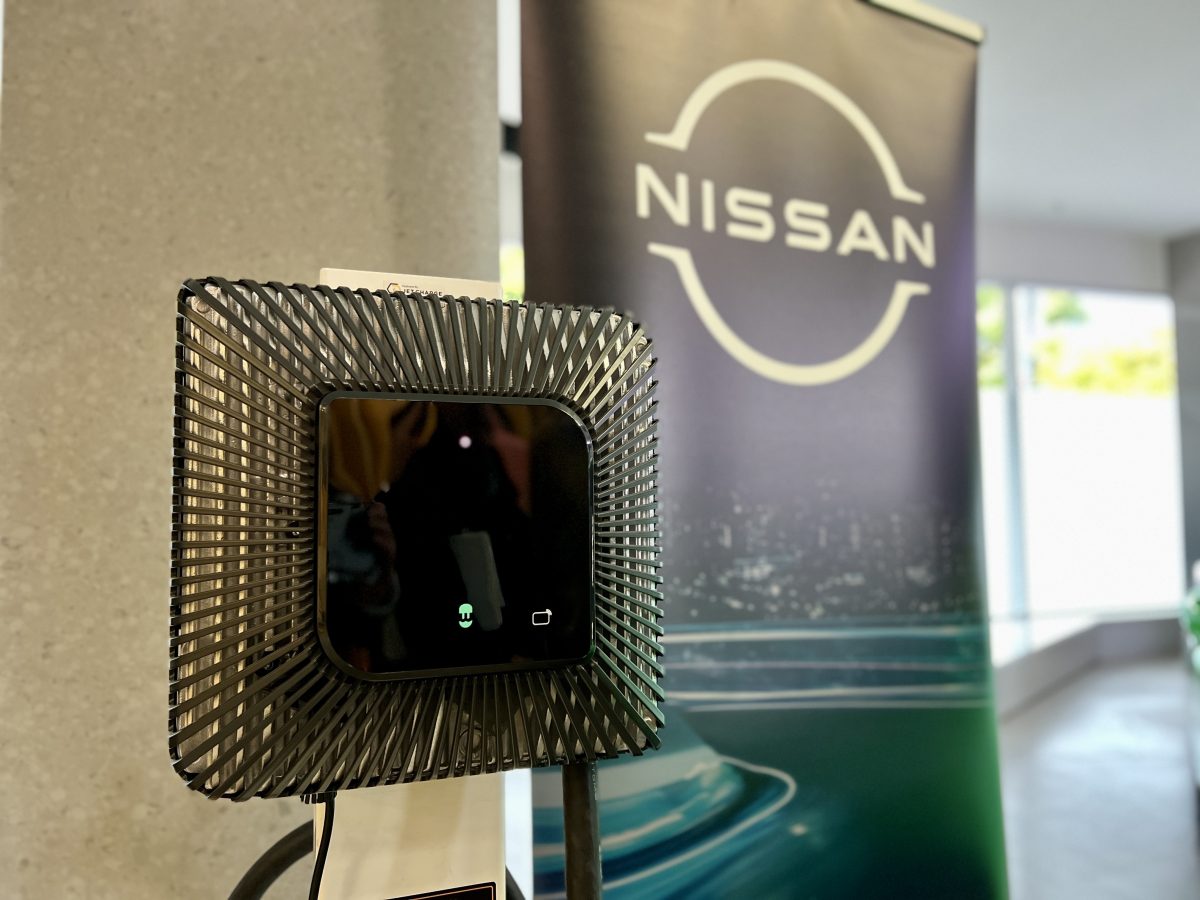
The Wallbox Quasar 1 V2G charger retails for about $10,000. Photo: James Coleman.
The EVs discharged a combined total of 170 kW into the grid over 10 minutes. To put those figures in perspective, the ACT and NSW would need 150,000 cars charging in this way to make up for a similar shortfall in power.
A spokesperson for ActewAGL told Region this is in keeping with the electricity market rules for ‘Frequency Control Ancillary Services’ (FCAS), and less than 2 per cent of each car’s total battery capacity was discharged.
The Australian National University (ANU), which led a study into what happened in February, said it’s the first time in the world this type of V2G response to an emergency has been demonstrated.
“It shows electric vehicles can provide the backup we need in an emergency like this,” Senior Research Fellow Dr Bjorn Sturmberg said.
He said V2G will have an important role to play in the future, when “the grid won’t be able to cope with everyone charging at the same time when they get home in the evening”.
Dr Sturmberg argued there would be “little cost or inconveniences in delaying charging for an hour or two” and longer than 10 minutes in future emergency situations.
“It may call for an industry adjustment, for instance, to require EV manufacturers to program their vehicles to stop charging during a grid emergency, with an option for drivers to override for urgent charging.
“Stopping just 6000 EVs charging would have kept the power on for those 90,000 customers whose power was cut on February 13.”
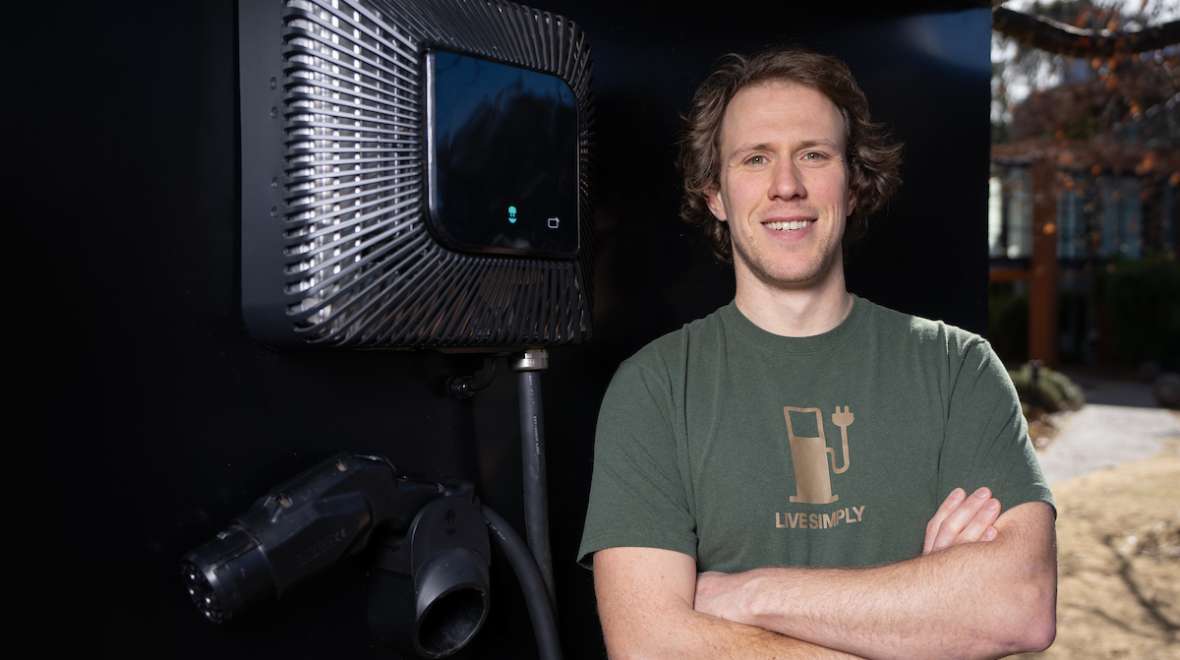
Senior Research Fellow Dr Bjorn Sturmberg, ANU. Photo: ANU.
However, there are still a number of barriers before V2G becomes the go-to option.
So far, South Australia is the only jurisdiction in Australia to approve it, and in May, the Mitsubishi Outlander PHEV was added to a list of only two cars capable of V2G charging.
The Wallbox Quasar 1 remains the only V2G bidirectional charger approved for use in Australia and retails for around $10,000.
ActewAGL said there are still “multiple pieces of the puzzle that need to come together to facilitate V2G”, and it is a few years away from being available in residential developments.
“ActewAGL will develop value propositions for EV owners when V2G/V2H is more broadly available.”












